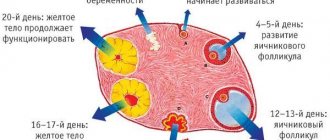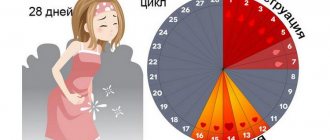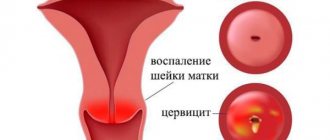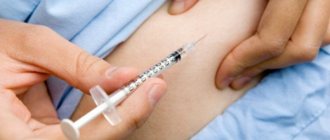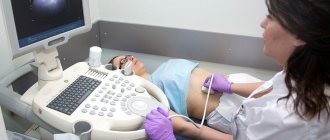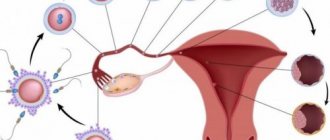The newly discovered coronavirus infection, caused by COVID-19, is highly contagious, which is why most attempts to stop the pandemic have failed. Great hopes were placed on laboratory tests to determine the presence of antibodies in people's blood, confirming that the person had developed immunity.
However, it turned out that everything is not so simple - it is necessary to take into account all the existing nuances due to the characteristics of the body, and, in particular, its protective forces, the severity of the disease, what kind of infection and other components.
But initially, in order to draw conclusions from the test results, you should know when antibodies to coronavirus are produced, when some immunoglobulins are replaced by others, and how long do they stay in the body in various forms of COVID-19?
Immunity and antibodies
Immunity to infectious diseases in humans can be congenital and acquired, which is divided into nonspecific and specific. Nonspecific (cellular) immunity is based on the activity of tissue cells and proteins - cytokines, interferon, macrophages, which are the first to respond to the invasion of a pathogenic agent and block the reproduction of the pathogen, affecting it in different ways.
Therefore, in people who have had an asymptomatic or mild form of the disease, antibodies may not form, which indicates that cellular immunity is sufficiently effective. If nonspecific immunity fails to cope with the invading pathogen, the body’s specific defense mechanism is launched.
Specific (humoral) immunity is the production of antibodies through a complex sequential mechanism of activation of blood cells, including the stage of transformation of B lymphocytes into plasma cells, due to which antibodies are formed - immunoglobulins.
In other words, antibodies are special proteins produced by the immune system in response to a pathogenic agent entering the body. In humans, they are represented by several types, each of which is responsible for a specific function:
- recognition,
- transmitting signals about the presence of a pathogen,
- neutralization,
- storage of information, etc.
Antibodies are synthesized by “memory cells” - B-lymphocytes, which receive information about the invading pathogen from the primary links of immunity: NK cells, T-lymphocytes, macrophages, etc.
Memory cells produce immunoglobulins, which, in turn, bind the antigen and eliminate it from the body. After the body has been “cleansed” of the infection, the number of antibodies decreases, but the pool of memory cells remains.
Upon repeated interaction with a “familiar” pathogen, memory cells begin to produce antibodies to it quickly and in large quantities. This reaction of the defense system is called a specific immune response, and due to its efficiency, it prevents the development of a disease with characteristic symptoms. That is, the infectious process does not lead to the appearance of the disease in its full extent.
The presence of antibodies in the blood indicates that the immune system has not only previously encountered the pathogen, but has also formed a defense against it.
Determining the day of ovulation without a menstrual calendar
If a woman does not keep a calendar, then other methods will help her determine on what day after her period ovulation will occur. For example, an ovulation calendar.
Ovulation calendar
To determine the date of its occurrence using the ovulation calendar, you must enter the following parameters:
- day of last menstruation;
- duration;
- cycle size.
It is possible to enter this data only for the last two months. That is, in order to understand on what day after menstruation ovulation will occur, you do not need to observe the body for a long time. But this calculator will not be very helpful if the girl’s life rhythm is unstable. In such a situation, calculation methods are not accurate. It's better to try others.
Ovulation tests - when to use
To determine on what day after the start of menstruation ovulation is more likely, special tests are used to determine it. They are quite affordable and work on a similar principle to pregnancy test strips. The difference is the reagent with which they are impregnated.
When the egg is released, the follicle in which it matures ruptures. Luteinizing hormone (LH) is released into the body. It is its high concentration, the so-called “burst”, that indicates the imminent entry of the cell into the fallopian tube.
A mature egg ruptures the follicle
The test detects the level of LH in the urine. A bright stripe on it indicates a high LH content. After which ovulation will occur after 10-12 hours.
In order not to miss the moment, measurements should be taken 17 days before the end of the cycle:
- 14 – on what day after ovulation do menstruation come (luteal phase);
- 3 – maximum possible ovulation period.
Subtracting 17 from the cycle duration, we get the day the tests started (for example, the 11th with a 28-day cycle). They need to be carried out every day or twice (if there is a chance of missing this short period) at the same time, following the instructions. You also need to limit the amount of liquid consumed for several hours so that it does not lower the level of LH concentration, and not visit the toilet 2-3 hours before the test.
Normal LH levels are different for every woman. Some women may notice a bright streak every day. This indicates a constant high content of LH. For this situation, this method will be ineffective.
Determining ovulation by how you feel
The best way to determine on what day ovulation begins after menstruation is to observe your sensations. In particular, the egg, leaving the ovary, breaks through its wall. A small wound is formed, which, of course, brings discomfort. It is expressed in pain in the area of the ovary and lower abdomen. In this case, the ovaries work alternately, with rare exceptions. Therefore, pain can be observed on either side. Sometimes the stomach becomes a little bloated. This is also a normal reaction to the passage of an egg through the tubes. Sometimes this is accompanied by gas formation.
In addition, obvious signs of imminent ovulation are:
- Painful, swollen breasts - the body is preparing to reproduce.
- Atypical discharge – thick, viscous, profuse. They also differ in color - transparent.
- Increased libido. A woman is subconsciously ready for fertilization. It is observed a couple of days before ovulation.
Of course, there are changes in the level of hormones in the blood and urine, and in the cervix, but this list is enough to determine the onset of the long-awaited moment. Although, not everyone expresses them clearly and they can be missed.
When are antibodies formed in COVID-19?
Numerous studies have found that immunoglobulins appear in the blood both in response to a clinically significant disease and in situations of asymptomatic coronavirus infection.
In the first week after infection, class M immunoglobulins (IgM) begin to be synthesized - this occurs approximately on the 3-5th day of the disease. They are the first to encounter an infection that has entered the body, and therefore are considered markers of the acute period of the disease. IgM is present in the blood during the first 2-3 weeks, then its amount gradually decreases.
However, testing for the detection of class M antibodies can detect a nonspecific reaction, which is why in some cases a false positive result is observed. Since immunoglobulins M perform the function of the “first line of defense,” they must begin to repel the attack of the pathogen as quickly as possible, therefore they do not have pronounced specificity and may not capture the pathogen accurately enough.
various pathological and physiological processes of a different nature can lead to a nonspecific reaction with the test system
- acute and chronic inflammatory diseases;
- problems with the thyroid gland;
- autoimmune diseases;
- pregnancy, etc.
In such situations, the test result will be considered a false positive and retesting will be required. With a standard infectious disease, including infection with coronavirus, after about a month, class M immunoglobulins disappear, being replaced by more specific class G antibodies (IgG).
However, scientists have recently found that during coronavirus infection, class M immunoglobulins can persist much longer than with previously known pathogens. These antibodies were determined in the blood of people who had the disease 1.5-3 months after the onset of characteristic symptoms, when the coronavirus itself was not detected for a long time.
At the moment, it is unknown whether lasting immunity to coronavirus is developed, since the mechanisms of development of the immune response to the new pathogen are under study. However, the presence of immunoglobulins G in the blood indicates that this infection has entered the body and the formation of an immune response to it, and how long it lasts remains to be seen.
Experts say that it is the presence of immunoglobulins G in the blood serum that indicates that a person has suffered a coronavirus infection. 2-3 months after the disease, antibodies are predominantly of class G, and can remain in the body for a year or longer, scientists say.
Algorithm for calculating the day of ovulation
Understanding the process of ovulation, you should know that it occurs almost in the middle of the female cycle - between the follicular and luteal processes. The first is characterized by the maturation of a germ cell in the ovary and can last on average from 11 days. The second is static and always lasts 14 days, and ends with bleeding of the next menstruation. Between them there is a short period of time (1-1.5 days), which is called ovulation.
The increase in the chance of fertilization at this moment is explained by the fact that the cell left the ovary and entered the fallopian tubes. If the effect is successful, the sperm will reach it here, and once fertilized, it will attach to the wall of the uterus.
Knowing these simple facts, it is very easy to determine on what day ovulation occurs after menstruation. It is enough to subtract the constant value 14 (luteal phase) from the cycle duration. The resulting number indicates how much you need to count from the beginning of menstruation.
Following this rule, we obtain the following values:
- On the 12th day, with a cycle of 26.
- 13th – 27;
- 14th – 28;
- 15th – 29;
- etc.
How long does immunity last?
Chinese scientists are actively studying the results of antibody tests, trying to figure out how long it takes for immunoglobulins to disappear from the blood. As part of the research, the main criterion was to compare the indicators of patients who had COVID-19 asymptomatically and those who had characteristic signs of the disease.
It was found that the immune system of asymptomatic individuals responded to coronavirus infection less actively. The research also revealed that after about three months, the amount of antibodies in the serum of patients who had the disease in asymptomatic form approached zero.
Therefore, it is still difficult for scientists to answer unequivocally whether immunity to coronavirus is formed in all those infected or not. In addition, it remains unclear what the level of antibodies should be so that a person is protected from re-infection himself or does not become a source of infection for others.
At the same time, it was noted that in patients who have had moderate and severe forms of coronavirus disease, antibodies persist longer than in asymptomatic carriers or those who have recovered from mild symptoms. This information gives hope to patients who have had severe COVID-19.
In this case, one feature of the family of previously studied representatives of the coronavirus family, the causative agents of seasonal diseases, should be taken into account. It lies in the fact that repeated infection is accompanied by the entry of more virus into the body, even if the number of antibodies remains and increases.
Kenyan scientists conducting this study suggested that this is due to the virus using antibodies during re-infection to more successfully infect target cells. This phenomenon, characteristic of the coronavirus family, has been carefully studied since the beginning of the pandemic and, unfortunately, calls into question the effectiveness of a number of proposed vaccines.
What does the basal temperature chart tell you?
If a woman has an irregular cycle and the listed methods are not suitable for her, there is the most accurate option for determining ovulation and what day after menstruation it occurs. It is long and labor-intensive, but sometimes the expectant mother has no other choice.
It's called a basal temperature chart. Compiled based on daily rectal temperature measurements. It is better to do this in advance (from 3 months), following simple rules:
- The beginning of the chart is the first day of menstruation.
- Measuring is the first thing you do in the morning, without even leaving your bed.
- Excessive movements can affect accuracy. It’s even worth preparing and “shaking off” the thermometer in the evening.
- During illness, it is better to postpone the measurement so as not to distort the picture.
- If you drink alcohol, you should put an explanatory note on the chart.
The schedule itself is quite simple to implement. Two coordinate axes: temperature is on the vertical part, days are on the horizontal part. Every day a point is placed in the corresponding plane. After the end of the month they are connected by a curved line.
A basal temperature measurement chart will help determine the date of ovulation after menstruation
To decipher the curve, it is necessary to return again to the process of ovulation, which is characterized by the following values:
- The normal human temperature is about 37°C.
- The egg leaves the ovary, the hormone is released, which leads to a decrease of 0.4-0.6°C.
- The end of ovulation is an increase in temperature almost to normal (but slightly lower).
- Luteal phase – normal temperature or 0.1-0.2°C lower.
- Before the first day of menstruation – a decrease of 0.3-0.4°C.
